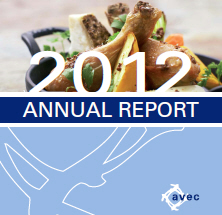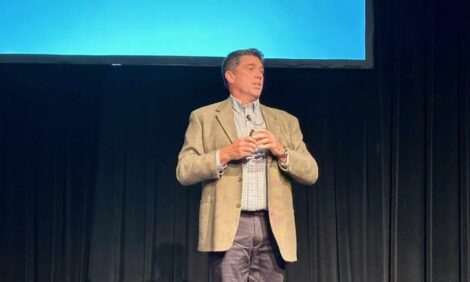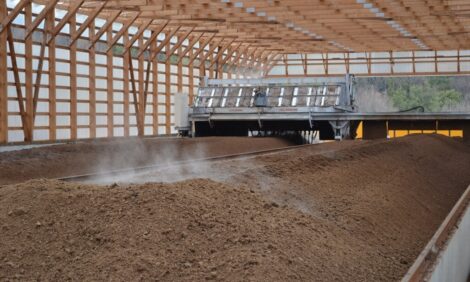



AVEC Annual Report 2012: Animal Welfare and Health
In its annual report for 2012, the Association of Poultry Processors and Poultry Trade in the EU Countries, AVEC, describes the progress that has been made over the last year on the appropriate use of antimicrobials, the Commission's Animal Welfare Strategy 2012-2015, cloning, protection of animals during transport and implementation of the Broiler Welfare Directive - an overview of the main issues in the EU.
Appropriate Use of Antimicrobials
Antimicrobial resistance in bacteria is a great challenge to society and
the European poultry industry is keen to show how seriously all
partners in the chain including advisors and veterinarians are acting
while keeping animals healthy.
“Appropriate use of antimicrobials is the key to mitigating the risk of
widespread antimicrobial resistance.”
Antimicrobial resistance in bacteria and other mechanisms of
resistance are a natural phenomenon. It has existed prior to the use of
antimicrobials by humans. Particular strains or species of bacteria are
naturally resistant to certain antimicrobials and therefore antimicrobial
resistance can exist prior to administration of antimicrobial products.
However, most discussions focus on resistance which occurs after
exposure of the bacteria to the antimicrobial. This is an inherent risk
associated with any use of antimicrobial medication in any species but
adherence to appropriate procedures for use will significantly reduce
the risk.
a.v.e.c. has drawn up a common position on prevention and
responsible use of antibiotics.
The EU poultry industries have defined a four-point action plan with eight
recommendations to ensure prudent use of antimicrobials in the
whole poultry production chain. Through monitoring and collection of
data, target setting for reduction of the use of antimicrobials and
performance benchmarking, responsible use of antimicrobials can be
confirmed.
a.v.e.c. and European Poultry Breeders (EPB) Group has agreed to
follow specific recommendations on flock biosecurity; the
farmer/veterinarian relationship; carrying out antibiograms;
distribution, cascade use, sampling, testing and monitoring of
antimicrobial resistance; record keeping by farmer and veterinarian; and
to review use of certain antimicrobials.
a.v.e.c. recognises the need for alternatives to antibiotics. More work
is needed to understand the science behind antimicrobial resistance in
humans and animals and the extent of any interrelationships. The
industry continues to cooperate with research institutes and the EU
authorities, to solve this difficult and complex issue, and to identify and
reduce potential future AMR challenges.
Commission Animal Welfare Strategy 2012-2015
Current conventional poultry production in the EU meets the strictest
criteria in the world in terms of food safety, animal health and welfare
and sustainable production and this must be recognised by regulators
and consumers. We must guard against introduction of additional
mandatory criteria that would weaken the competitiveness of EU
poultry production by imposing additional costs that hamper the
industries' ability to continue to improve resource efficiency.
a.v.e.c. welcomes the Animal Welfare Communication and agrees that
harmonised enforcement of existing welfare legislation is needed to
avoid internal market distortions and that this must extend to full
reciprocity on welfare and other regulations in bilateral and
multilateral negotiations.
The following main common drivers affecting the welfare status of
animals in the EU are: lack of enforcement of EU legislation by the
Member States in a number of areas; consumers' lack of appropriate
information on animal welfare; and the need for simplified legislation
based on clear principles for animal welfare.
| COMMISSION ANIMAL WELFARE STRATEGY 2012-2015 |
|---|
| In a.v.e.c.'s experience, the harmonised interpretation and
implementation of EU legislation is a real challenge and therefore we
strongly support the Commission Communication findings.
In its dialogue with consumers, the Commission must stress the already high standards applied in the EU animal production and prepare consumers for the higher costs of better standards. Regulation 1099/2009 on the protection of animals at time of killing The implementation of Reg. 1099/2009 will start from 1 Jan 2013. Food business operators have to draw up and implement standard operating procedures to ensure that killing and related operations are carried out according to the requirements. a.v.e.c. members are committed and have already started the important work with manufacturers of stunning equipment. The Commission is required to submit to the European Parliament and Council a report on the various stunning methods for poultry and in particular multiple-bird water-bath stunning taking into account welfare, socio-economic, and environmental impacts. A private consultancy company has already started drafting the external study. a.v.e.c. members are proactive and are collaborating by providing information on the questions being addressed. Requests by UK and The Netherlands to change the stated electrical frequency range are currently being considered by EFSA. An opinion is expected in months to come. Stunning for religious slaughter is a complicated issue. There are disagreements even within different Muslim communities about the stunning of poultry under Halal slaughter. For a.v.e.c. it is important that, whatever method of slaughter is adopted the welfare of the bird is protected and that for all meat, whether imported or from within the EU, the same rules are applied to avoid distortion of competition. The possible derogation for religious slaughter must not be a loophole that may seriously undermine the objectives of the EU regulation or the common market, both within the EU (through different application by different Member States) and with third countries. |
Cloning
The Commission is expected to propose new rules regulating cloning in the
animal breeding sector in March 2013. In framing its proposals, the Commission
will have in mind the need to avoid the same lack of Member State support that
caused the collapse of the Novel Food legislation March 2011.
An updated opinion by the EU's food safety authority EFSA is expected in June 2012, while an overall Commission impact assessment is expected by the end of 2012.
No EU application has been submitted so far on cloning animals for food
purposes but the growth of the use of cloning techniques outside the EU-27 has
raised doubts about EU imports with regards to other livestock species.
a.v.e.c. is actively following the developments, but today cloning in poultry is
not considered as an opportunity.
Protection of Animals during Transport
The Parliament adopted a declaration in March 2012 demanding a maximum 8-
hour limit for the transport of live animals to slaughter.
a.v.e.c. welcomes that the Commission in its Communication states that
enforcement of current legislation on transport
Regulation 1/2005 has to be implemented
before stricter rules are set and is willing to
cooperate for harmonising existing rules at EU
level. a.v.e.c. has contributed to this by drafting
the 'EPB Air Cargo Guide to Transport of Hatching Eggs and Chicks'1, intended to advise
on best practice in transport.
Implementation of the Broiler Welfare Directive 43/2007
After entering into force on 30 June 2010, information collected by a.v.e.c.
from members confirms that most Member States are following the Directive,
with some imposing additional or more restrictive requirements, mainly on
stocking density.
The Commission has started to collect data for a period of 12 months on
implementation. Certain Member States have agreed to provide details on the
use of indicators of welfare outcomes in assessing animal welfare. By the end of
2012 a report on the use of welfare indicators is to be published by the
European Commission. a.v.e.c. members are providing input in this process.
1 www.avec-poultry.eu/Default.aspx?ID=6712
webwizard.register.be/page.asp?p=wizard_2&id=797946&key=d41d8cd98f00b204e9800998ecf8427eC2CFA








